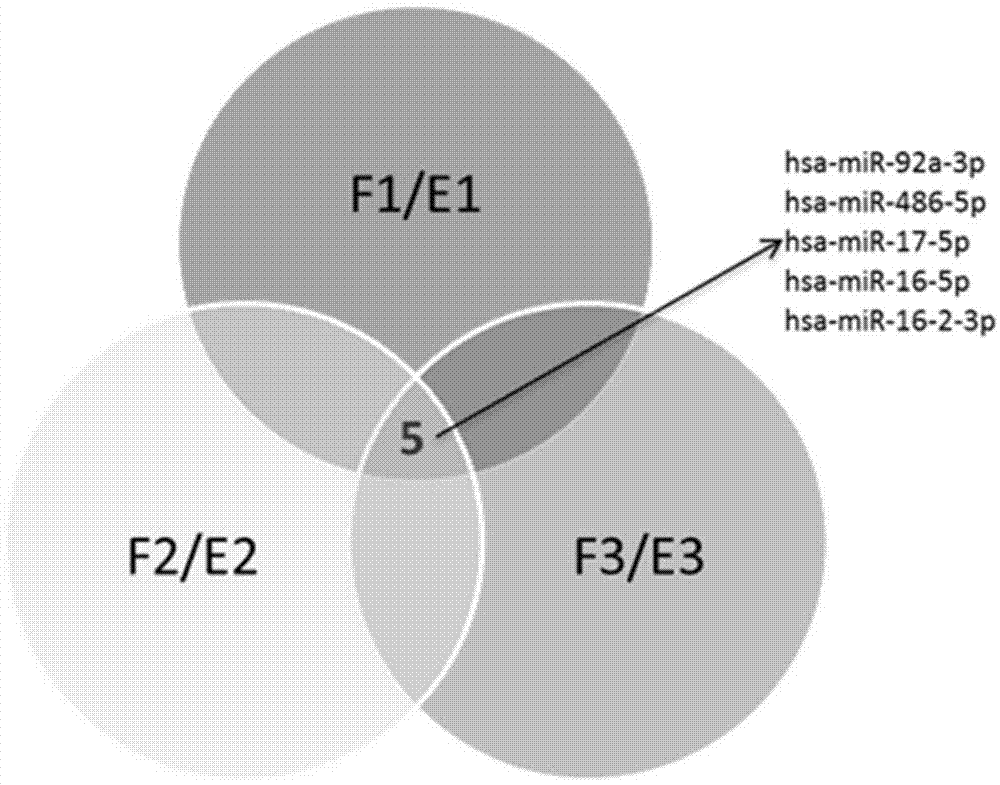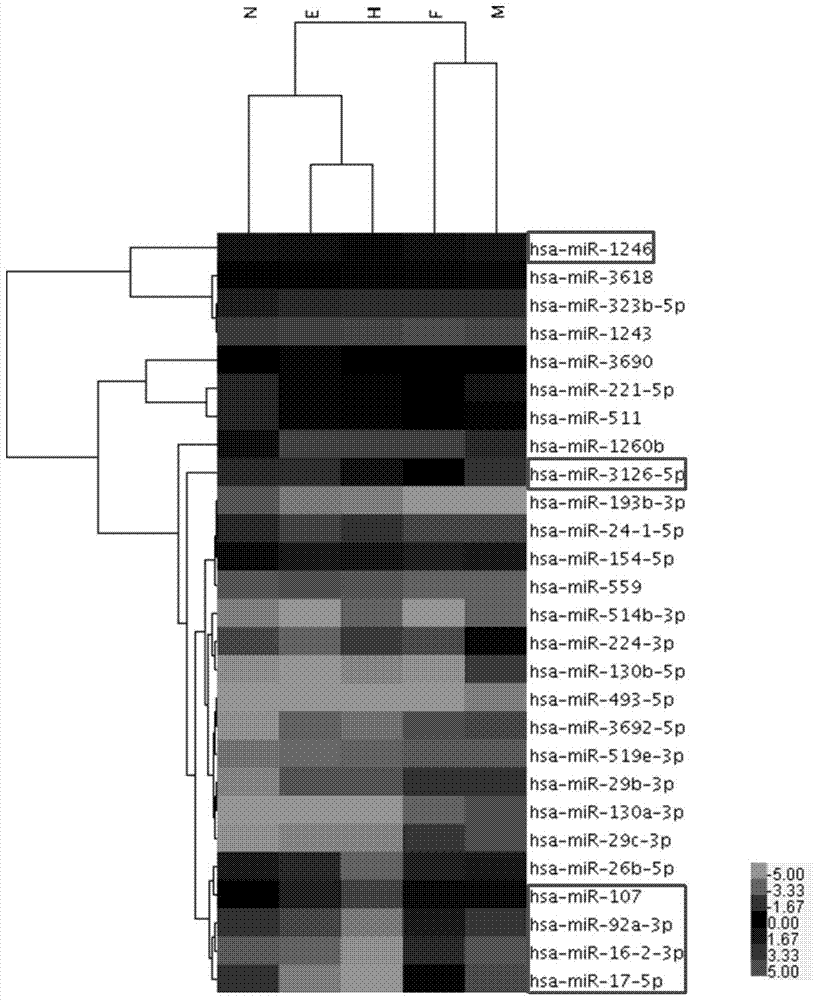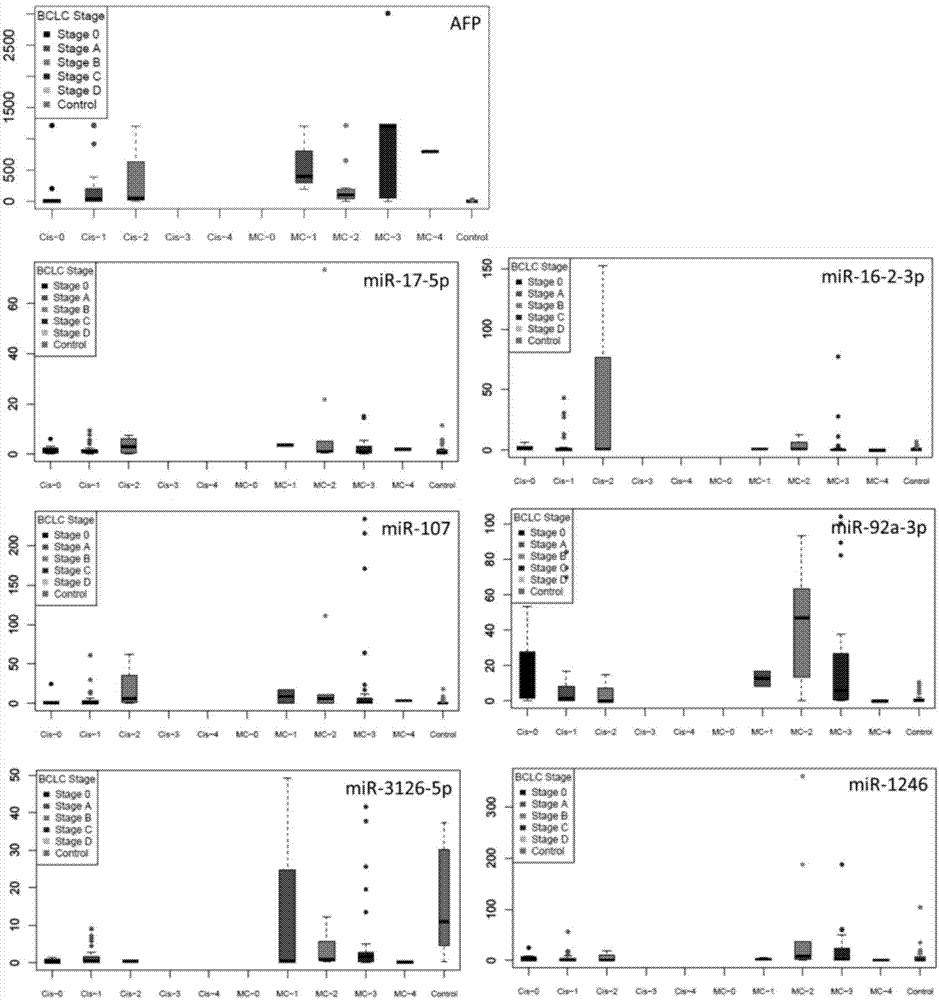Application of serum microRNA as early diagnostic marker for hepatocellular carcinoma metastasis
A technology of hepatocellular carcinoma, 1.microRNA-mir-107, applied in the fields of biotechnology and medicine, can solve problems such as large trauma, and achieve the effect of good sensitivity and specificity
- Summary
- Abstract
- Description
- Claims
- Application Information
AI Technical Summary
Problems solved by technology
Method used
Image
Examples
Embodiment 1
[0047] Example 1 Serum Sample Collection
[0048] A total of 155 serum samples were collected, including 62 serum samples from patients with metastasis, 53 serum samples from patients without metastasis, and 40 healthy controls. Serum was collected from the Department of Infectious Diseases, Provincial Hospital of Shandong University. Serum was collected at the time of clinical diagnosis, from March 2012 to November 2013. Serum was collected in coagulation-promoting tubes, centrifuged at 2000-3000rpm for 18-20min, the supernatant was drawn into centrifuge tubes, and stored at -80°C. The clinical case characteristics of the patients are shown in Table 1.
[0049] Table 1 Clinical data of serum samples
[0050]
[0051]
[0052] Tumor staging was according to the Barcelona classification system.
Embodiment 2
[0053] The detection of embodiment 2 microRNA chip
[0054] 1. Poly-HEMA plate preparation
[0055] Dissolve 2.4 g of Poly-HEMA powder in 20 mL of 95% ethanol, shake and mix at 65 °C for more than 8 h, prepare a Poly-HEMA stock solution with a concentration of 120 mg / mL, and store it in a sealed container at 4 °C. When preparing the plate, dilute it with 95% ethanol to form a working solution. Under sterile conditions, gently add the working solution to the bottom of the culture plate well along the well wall to cover the entire bottom of the well. Store at 4°C after ultraviolet irradiation overnight. Before use, it was irradiated under ultraviolet light for 0.5h and washed 3 times with sterile PBS.
[0056] 2. Preparation of liver cancer cell anoikis model
[0057] Liver cancer cell lines HepG2, BEL7402 and SMMC7721 were cultured in RPM11640 plus 10% fetal bovine serum at 37°C and 5% CO2 until logarithmic growth phase. Use 0.25% trypsin to digest the logarithmic phase adhe...
Embodiment 3
[0067] Example 3 Extraction of serum microRNA
[0068] (1) Take 400 μl of frozen patient serum, add 750 μl of lysate MRL, and pipette several times;
[0069] (2) Shake the homogenate sample vigorously, incubate at room temperature for 5 minutes, and carefully transfer the supernatant to a new RNasefree centrifuge tube.
[0070] (3) Add 200 μl chloroform for every 750 μl lysate, cover the sample tube tightly, shake vigorously for 15 seconds and incubate at room temperature for 3 minutes.
[0071] (4) Centrifuge at 12,000 rpm at 4°C for 10 minutes; the sample will be divided into 3 layers, remove the upper aqueous phase, and transfer to a new RNase freeEP tube.
[0072] (5) Add 0.6 times the volume of 70% ethanol, invert and mix well, and transfer the resulting solution and possible precipitates into the adsorption column RA.
[0073] (6) Centrifuge at 10000rpm for 45s, collect the filtrate, add 2 / 3 volume of absolute ethanol, mix by inversion, pour the mixture into adsorption...
PUM
 Login to View More
Login to View More Abstract
Description
Claims
Application Information
 Login to View More
Login to View More - R&D
- Intellectual Property
- Life Sciences
- Materials
- Tech Scout
- Unparalleled Data Quality
- Higher Quality Content
- 60% Fewer Hallucinations
Browse by: Latest US Patents, China's latest patents, Technical Efficacy Thesaurus, Application Domain, Technology Topic, Popular Technical Reports.
© 2025 PatSnap. All rights reserved.Legal|Privacy policy|Modern Slavery Act Transparency Statement|Sitemap|About US| Contact US: help@patsnap.com



